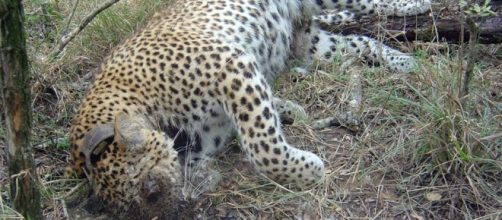The poisoning of elephants in Zimbabwehas horrified the millions of readers and viewers who have seen reports of the atrocities in the media.
Animal poisoning is not confined to Zimbabwe, and it has been happening for years longer than is generally known.
In October 2005, there was an incident of poisoning near Hoedspruit, an area close to the Kruger National Park in South Africa. In this incident, which killed kudu antelope, an additionalresult was the death of at least 27 vultures, which fed on the carcasses of the animals.
Tim Snow, who worked for theEndangered Wildlife Trust’s Poison Working Groupat that time, described the incident as, “the worst vulture poisoning…in the last four years at least.
A positive outcome was that 26 survivors were marked with patagial wing tags, and the re-sighting data has revealed that vultures cover vast distances across southern Africa.”
The poison used at Hoedspruit was carbofuran, commonly used in agriculture. Some of these substances have been banned, but some are illegally sold by informal traders. By adding insecticide poison to vegetables such as spinach, people kill foraging animals.
In May 2014, the Mail & Guardian reported that this is, “responsible for the deaths of up to 500,000 birds and animalseach year in South Africa.” This statement was based on a paper by Berutti, Snow et al. (2005).
The poisoning of elephant and rhino make the headlines globally.
Reporting on other animal poisonings are less frequent. The massive knock-on effect ofsecondary poisoning of vultures is very often overlooked.
The scale of the tragedy of these killing is that they are not only cruel but are affecting the green economy of South Africa. According to the South African National Biodiversity Institute, the value of Africa’s wildlife and natural resources could be worth over 70 billion $.
There is a desperate need to address the conflict between people and wildlife. In an effort to encourage people to practice conservation as a habit in their daily lives, the NGOWildlife Poisoning Preventionand Conflict Resolution (WPP&CR) engage with local communities, farmers, and conservation bodies to fight against poisoning.
Representative Tim Snow explains that their mission is to apply systems thinking to analyze cause and effect of the problems, and the cause and effect of management solutions. They hope to, “ensure thatefficient and effective methodscan resolve the conflict”. WPP&CR hopes to train at least 50 rangers per year for the next ten years, as a community of practice who understand the full forensic investigation of poisoning crimes.
Tim is well qualified to head efforts to turn the poisoning tide. He has been working against wildlife poisoning for 23 years. He is vice chairperson of the IUCN South African members committee, a leading member of the Game Rangers Association of Africa and works with Invasive Species South Africa.
The reaction to images of randomly killed wildlife is often one of helplessness. How can concerned individuals who live in Europe or the USA do anything to help prevent this slaughter?
Tim feels that understanding the causes of the problems can lead to ideas that can generate solutions.Social networking is the strongest weaponthat humans have at their fingertips to fight for the conservation of the world’s resources. He says that on some bleak days, just a few words of support can make a difference.
Poisoning in South Africa is not their only focus. Countries such as Zimbabwe and Botswana consult with the organization. A recent post on the WPP&CRFacebookpage concerns the Botswana government and highlights poisoning problems in that country.
“Social networking,” says Tim “is a platform where people can engage with change for the better by sharing articles, posting suggestions, and hosting fundraiser events.
Facebook's Massive anti-poaching network reaches millions globally
Rwanda proves that a green economy is within reach of all nations

